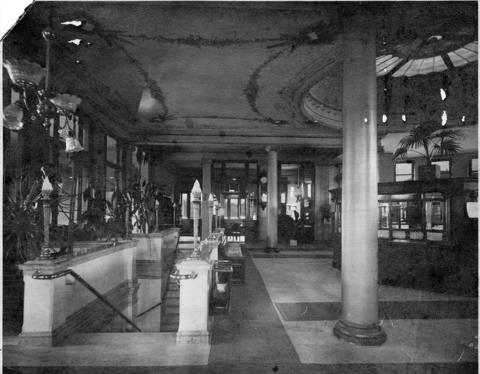Identity elements
Reference code
Name and location of repository
Level of description
Item
Title
TPL-4082
Date(s)
- 1904 (Creation)
Extent
Content and structure elements
Scope and content
ca. 1904. Interior of Tacoma Public Library. Originating in Grace Moore's South Tacoma home in 1886 from the donated volumes of 18 women friends, Puget Sound's first circulating library grew towards this ornate structure. In 1893, the 2,000 volumes in Mrs. Moore's Mercantile Library were given for free to the city of Tacoma as a public library. The library was housed in a series of buildings until it moved to City Hall. In 1901, the Reverend Calvin Stewart, a Presbyterian minister, obtained for the city a promise of $75,000 from industrialist Andrew Carnegie for the construction of a library. The donation was made on the condition that the city provide a suitable site and $7,500 yearly in maintenance. Tacoma would soon have the 85th Carnegie library built in the United States and the first in the state of Washington. It was designed by the New York architectural firm of Jardine, Kent and Jardine in the Renaissance style. The building featured a grand staircase of White Vermont marble, an ornate copper clad dome, decorative ceiling stenciling, Ionic columns and high ceilings. It was dedicated June 4, 1903. At the rear of the photograph behind the columns is the public reading room, the area is now occupied by the rare book room. To the right is the wooden structure that housed the librarian, who retrieved books from the closed stacks behind them. Potted plants and ornate lighting fixtures complete the opulent setting. ("A History of Pierce County Washington" volume 3, pg. 99)
Public Libraries--Tacoma; Tacoma Public Library (Tacoma);

